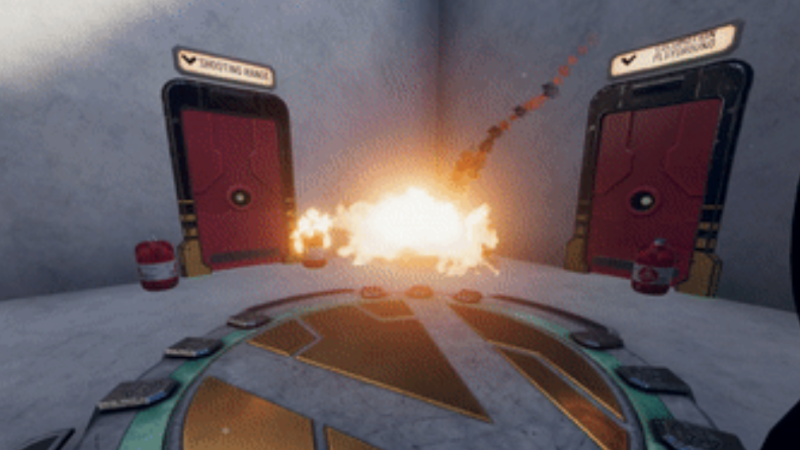In first-person games, an effective way to heighten immersion is to give the player a sense of impact and force by figuratively shaking the camera. That’s a tried and true practice for FPS games played on a monitor, but to [Zulubo]’s knowledge, no one has implemented traditional screen shake in a VR title because it would be a sure way to trigger motion sickness. Unsatisfied with that limitation, some clever experimentation led [Zulubo] to a method of doing screen shake in VR that doesn’t cause any of the usual problems.
Screen shake doesn’t translate well to VR because the traditional method is to shake the player’s entire view. This works fine when viewed on a monitor, but in VR the brain interprets the visual cue as evidence that one’s head and eyeballs are physically shaking while the vestibular system is reporting nothing of the sort. This kind of sensory mismatch leads to motion sickness in most people.
The key to getting the essence of a screen shake without any of the motion sickness baggage turned out to be a mix of two things. First, the shake is restricted to peripheral vision only. Second, it is restricted to an “in and out” motion, with no tilting or twisting. The result is a conveyance of concussion and impact that doesn’t rely on shaking the player’s view, at least not in a way that leads to motion sickness. It’s the product of some clever experimentation to solve a problem, and freely downloadable for use by anyone who may be interested.
Speaking of fooling one’s senses in VR environments, here is a fascinating method of simulating zero gravity: waterproof the VR headset and go underwater.
[via Reddit]
















as someone invested in VR already I think this is a good investigation of an already well established concept. truth be told most subtle shake that users are aware of is just a distortion of the eyeball in the real world. unless an event is powerful enough to knock a player off their feet in game (guaranteed jarring/motion-sickness inducing) this is a practical approach to the effect. combining the FOV tweaks for the effect with local distortion in game space should create much more natural, however likely with additional overhead, experience. though I’m far from a game developer or an expert on the matter its just my 2cent observation.
The art of screen shake – very good presentation about immersive effects in games: https://www.youtube.com/watch?v=AJdEqssNZ-U
I wonder what a VR headset with an integrated ERM haptic vibrator would look/feel like. Do any of the phone-based systems (daydream, gear VR) utilize the phone’s vibrator?
Program the system to smack ’em in the head with a pillow at appropriate moments, bringing the eyes and vestibular system into sync.
Foam bat on a big servo would probably be easier to rig up, and with less hysteresis.
Another thought: put it on a vertical track for more precisely located haptic feedback.
With a big enough servo and the bat close enough to the floor, you could *really* accurately ‘mimic’ an event powerful enough to knock the player from their feet. :D